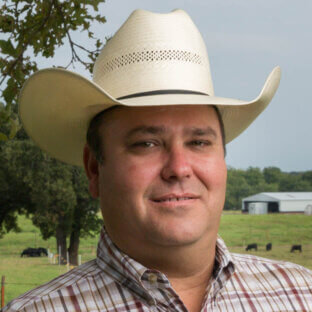Replacement heifers are the hot topic at most rancher gatherings these days. Where to find quality, dependable and reasonably priced females is always a concern. All too often, producers are still selecting and developing their replacement females the same way dad and granddad did 75 to 100 years ago. This method can still work if you are not too concerned about the profitability of your cattle operation, but we have better, more reliable and profitable methods available for selecting and developing females for the cattle business today. Proper selection will affect ranch profitability for the next 10 to 12 years, the productive life of that heifer. Treat replacement heifers as a valued employee in your ranching business, and she will be a more profitable member of your ranch team in the future. Consider selecting and training a heifer like you would an employee.
“Interview” the heifer similar to how you would a new ranch hand. Make a list of all the traits that you want your heifer to have in order of economic importance and make sure she is able to meet most, if not, all the traits. If she doesn’t have all the desired traits, decide if you can “train” her to fit your needs.
Does that training involve giving her proper vaccinations or more feed to achieve a desirable body condition score prior to calving? If she does not have the desired traits, you should not hire her for the job on your ranch. If she is the wrong type or the first calving date is too late, then it does not matter how cheap you can buy the heifer, she simply does not fit your program. One option available to modern-day ranchers that was not available to granddad is to DNA test the heifer before making a commitment to her. This is one of the best ways to make sure you are hiring the right female for the job who will be successful with the job description she has to work within.
Next, you need to keep in mind that every employee requires a training period to learn the job; a heifer is not different. This involves making sure she has had correct and timely vaccination and deworming after she arrives on the ranch and before calving season. Additionally, you will need to make sure you continue to feed her to reach or maintain a body condition score (BCS) of 6 by calving. A BCS of 6 is important in order for the heifer to be able to rebreed in a time with the early calvers of the main cow herd. This is a difficult task for the replacement heifer since she is lactating, still growing, and trying to go through the process of uterine involution and healing, all while she is losing her baby teeth. Even a properly developed heifer can have calving difficulty or not rebreed if the buyer of the heifer does not keep her on a high enough plane of nutrition through the second breeding season.
Remember for any employee to be successful in their job, they must initially fit the job position and then be trained properly to do the job. In order to have a good “employee,” you must consider the following characteristics for your new employee to work for you: phenotype, genetics/breeding (DNA test), health and vaccinations, sire of gestating calf and expected first calving date, how was she developed, and finally, price. The old adage is very true, your cows must work for you 365 days a year, so make sure she fits the environment and management in which she is expected to work.


Comments